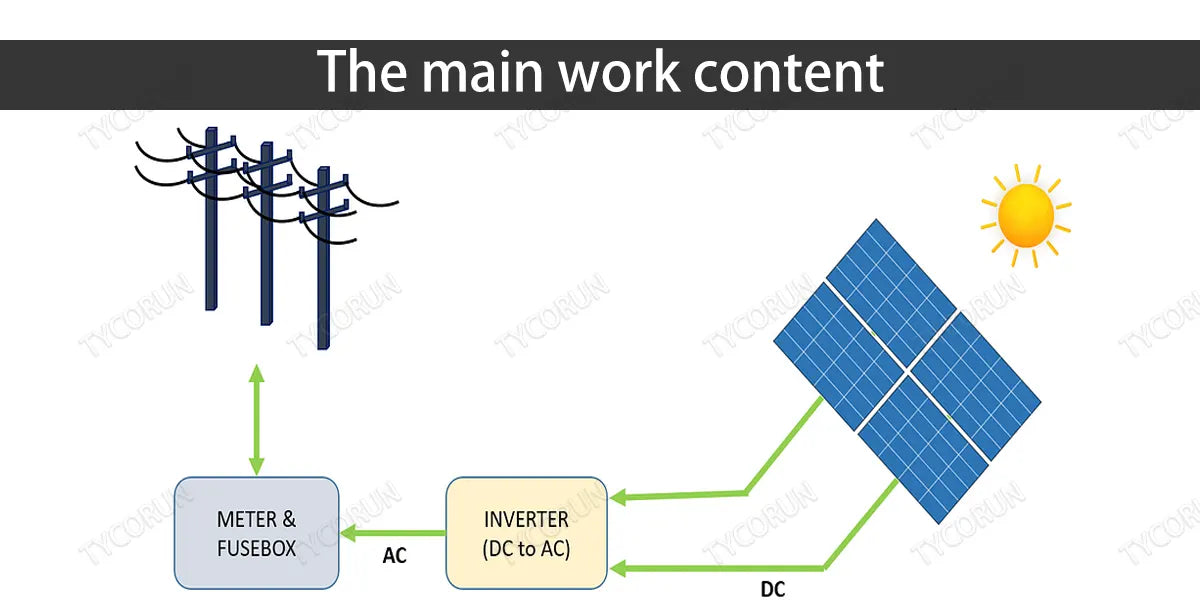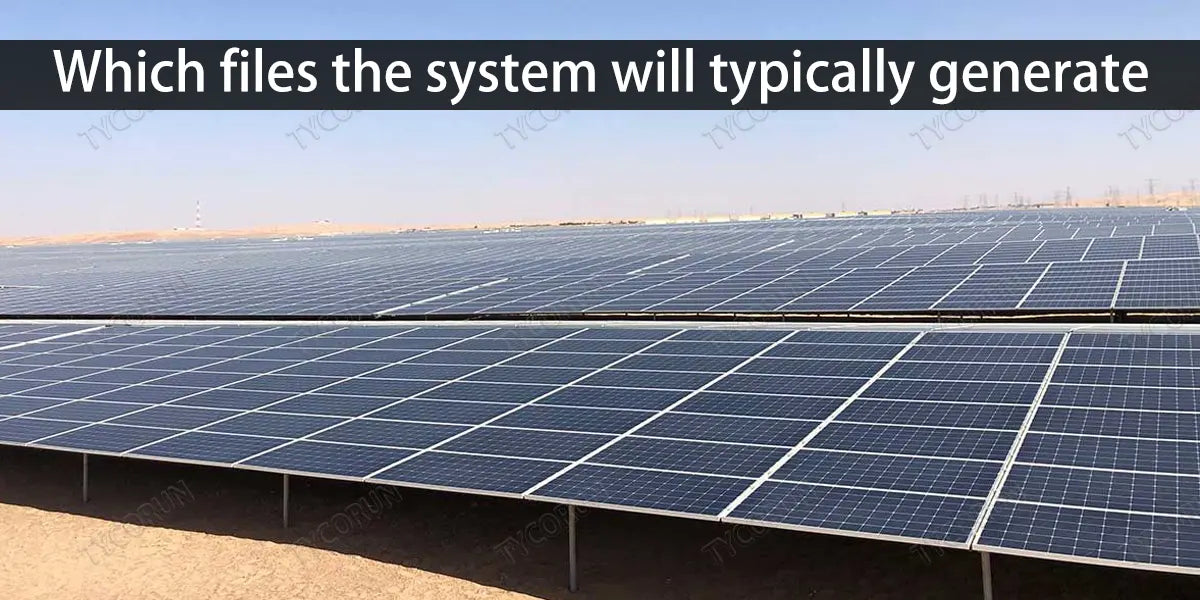
Main content:
1. Introduction to the power prediction system
The photovoltaic power generation prediction system is a technology based on data analysis and model prediction, which predicts the power generation power of PV power stations in the future for a period of time through comprehensive analysis of historical data, weather forecasts, power station parameters and other information.
It is like the "intelligent brain" of the power station, which can predict the power generation capacity of the power station in advance and provide an important basis for the optimal operation of the power station.
2. Components of the prediction system
The optical power prediction system generally includes three parts: data monitoring, power prediction, and software platform display. Monitoring is the basis of forecasting, and data monitoring includes the monitoring of meteorological information, power inverter 3000w and the monitoring of the operation status of photovoltaic power plants.
The optical power forecasting system can realize short-term and ultra-short-term forecasting functions to meet the needs of photovoltaic power generation companies for different timeliness forecasts.
The software platform visualizes and analyzes the results of monitored and predicted data. The system meets the specifications of the power grid, has the characteristics of high efficiency, accuracy and intelligence, and provides the basis and guarantee for the formulation of the entire day-ahead power generation plan and operation mode.
3. The main work content
- Data collection
The system collects real-time data of photovoltaic power stations through sensors (hall current sensor) and monitoring equipment, including meteorological information such as light intensity, temperature, wind speed, and output power, voltage, current and other parameters of photovoltaic modules like 2000 watt inverter.
- Data preprocessing
Cleaning, filtering, and denoising the collected data to ensure the accuracy and completeness of the data.

- Model establishment
Use machine learning, artificial intelligence and other technologies to establish a photovoltaic power generation power prediction model. These models can be mathematical models based on physical principles or statistical models based on historical data.
- Model training
The preprocessed data is input into the prediction model, and the model can accurately predict the power generation of the photovoltaic power plant by continuously adjusting the parameters of the model.
- Prediction output
After the model is trained, the system will generate a prediction result of the power generation of the PV power station in the future based on real-time data and the prediction model.
- Result evaluation and optimization
Evaluate prediction results, analyze the causes of prediction errors, and optimize and improve the model to improve the accuracy of the prediction.
4. Capital construction process
- Data Collection
Basic information of photovoltaic power station: such as regional scope, latitude and longitude, altitude, surface characteristics, climate characteristics, overall layout diagram, etc.
Detailed data of photovoltaic module, such as module type, manufacturer, efficiency, module tracking system, fixed installation inclination like solar panel angle, inverter efficiency, historical operation data of the last year, and grid connection. Detailed data of automatic environmental monitoring stations: historical meteorological observation data of monitoring stations.
5. How the system realize its function
The extranet server can access the Internet, and it can download the weather forecast data of the station from the designated server on the Internet, and the general download time is about 7 o'clock on the same day.

Then, the weather forecast data of the day is transmitted to the intranet server through the reverse isolator, so that the mission of the extranet server is completed.
The function of the intranet server is that the data required for the prediction in the receiving station and the data collected by the environmental detector are stored in the database library of the server.
And then the program in the intranet server will take the data from the database, and generate the file required by the dispatcher according to the corresponding numerical value and calculation formula of the prediction system.
A common data file suffix is PDV. After that, the generated file is sent to the scheduler via protocol 102 (or FTP). The back-end host display can display scheduling requirements curves and data generated by the prediction system, which is intuitively displayed to operation and maintenance personnel to facilitate operation and maintenance management.
6. Which files the system will typically generate
Generally, several files are generated: short-term files, ultra-short-term files, and meteorological files.
- Short-term files
The generation of short-term files is based on weather forecast files transmitted from the Internet, and file names generally contain the word DQ, which is easier to distinguish. This document is sent at least once a day. This file is a forecast for the whole day, which will form a complete curve for the whole day on the background computer.

- Ultra-short-term files
Ultra-short-term files are files generated from real-time weather data, which is derived from environmental detectors. For wind farms, it's mainly wind speed and direction. And for photovoltaic power generation system, it is mainly the radiation value. This file needs to be delivered every 15 minutes (general scheduling requirements) and cannot be interrupted.
- Meteorological documents
Meteorological documents are the data collected by the environmental detector and sent to the dispatch center. In general, it is a data file every 5 minutes. In addition, according to the requirements of the provinces, there are other data that must also be sent through the forecasting system, and specific problems will be analyzed on a case-by-case basis.
7. Conclusion
With the continuous development of artificial intelligence, big data and other technologies, the photovoltaic power generation power prediction system will become more intelligent and accurate.
At the same time, integration with the Internet of Things, cloud computing and other technologies will also bring more innovative applications and development opportunities for the photovoltaic power generation industry.
Related articles: voltage vs current, distributed power supply, top 5 PV module companies in India
















